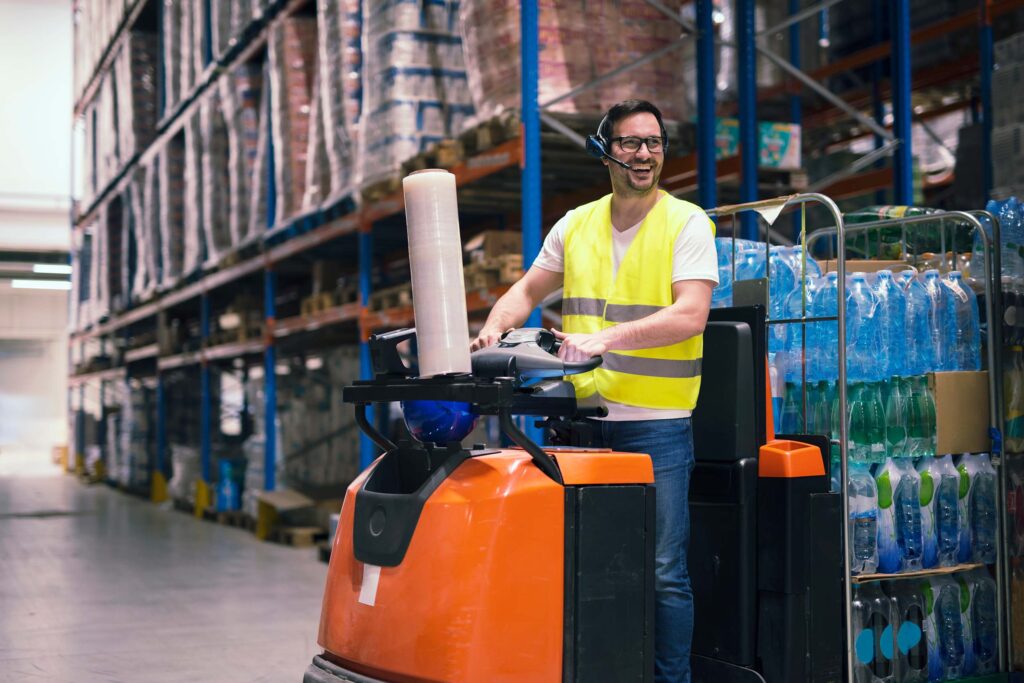For warehouse, factory, and distribution center material handling, both reach trucks and forklifts are critical equipment.
Though they may look similar at first glance, reach trucks and forklifts are actually quite different in design, operations, and preferred applications.
Understanding reach truck vs forklift differences enables companies to select the right equipment for their enterprise.

What Is a Forklift?
A forklift is a multi-purpose industrial vehicle employed to lift, move, and stack heavy loads over a short distance. Forklifts are commonly found in warehouses, construction sites, and factories.
Key Features of a Forklift:
- Load Capacity: Forklifts are utilized to move heavy loads, typically between 1,500 kg and over 25,000 kg, based on the model.
- Tyres: Equipped with pneumatic (air-filled) or solid rubber tyres, and are equally suitable for use indoors and outdoors.
- Lift Height: Standard forklifts tend to lift loads to around 6 metres, although high-mast forklifts go higher.
- Fuel Type: Comes in electric, diesel, or LPG (liquefied petroleum gas) form.
What Is a Reach Truck?
A reach truck is a type of forklift designed specifically to be utilized within narrow-aisle warehouses. Reach trucks are different from standard forklifts because they possess a longer mast that allows them to lift loads to greater heights without becoming unstable.
Key Features of a Reach Truck:
- Lift Height: Reach trucks are capable of lifting loads of 12 metres and above, hence ideal for high-rack storage.
- Narrow Aisle Maneuverability: Custom-made to perform satisfactorily in narrow aisles, which could have aisle widths as narrow as 2.5 to 3 metres.
- Stability Mechanism: Utilizes outriggers and counterbalance weight rather than a heavy rear counterweight, improving stability while lifting heavy loads.
- Power Source: Primarily electric-powered, low-emission and intended for indoor use.
Reach Truck vs Forklift Differences
| Feature | Forklift | Reach Truck |
|---|---|---|
| Primary Use | Indoor & outdoor material handling | Indoor use, narrow-aisle warehouses |
| Lift Height | Up to 6 metres | Up to 12 metres |
| Load Capacity | 1,500 – 25,000 kg | 1,000 – 4,500 kg |
| Maneuverability | Requires wider aisles (3.5 – 4 metres) | Operates in narrow aisles (2.5 – 3 metres) |
| Tyres | Pneumatic or solid | Small, hard rubber wheels |
| Stability | Counterweight in the rear | Outriggers and legs for balance |
| Power Source | Electric, diesel, LPG | Electric |
| Best for | Outdoor and heavy-duty lifting | High-rack warehouse storage |
When to Choose a Forklift?
A forklift is ideal for:
✔ Outdoor work on construction and loading docks.
✔ Transporting heavy loads for long distances within a facility.
✔ Transporting bulky or oversized material.
✔ Use on surfaces with uneven surfaces.
When to Choose a Reach Truck?
A reach truck is best suited for:
✔ High-storage warehouses where maximum vertical space is used.
✔ Narrow-aisle warehouses where maneuverability is essential.
✔ Indoor operations where emissions must be minimized.
✔ Picking and stacking of pallets in high racking.
At Result Forklift Training, we offer both courses for beginners. Quickly go through our detailed training course on Counterbalance Forklift Training and Reach Truck Training guides.
So, Get your Reach Truck Licence today and become a qualified Reach Truck operator as soon as possible. Our forklift training programme adheres stringently to ACOP guidelines by the HSE and is accepted by the RTITB Training Board Standards accrediting body licensed by the HSE.
Conclusion
Whereas forklifts and reach trucks are both essential to warehouse efficiency, they serve distinct purposes. In case there is heavy-duty lifting required in widely differing environments within your business, a forklift is the ideal choice. However, if you need to optimize storage capacity in an elevated-rack warehouse, the better choice is a reach truck.
With the knowledge of reach truck and forklift variations, organizations can make an informed choice to improve efficiency, safety, and productivity in material handling operations.
Leave a note in the comment section on which course you would love to choose and why. We will reach out to you.

